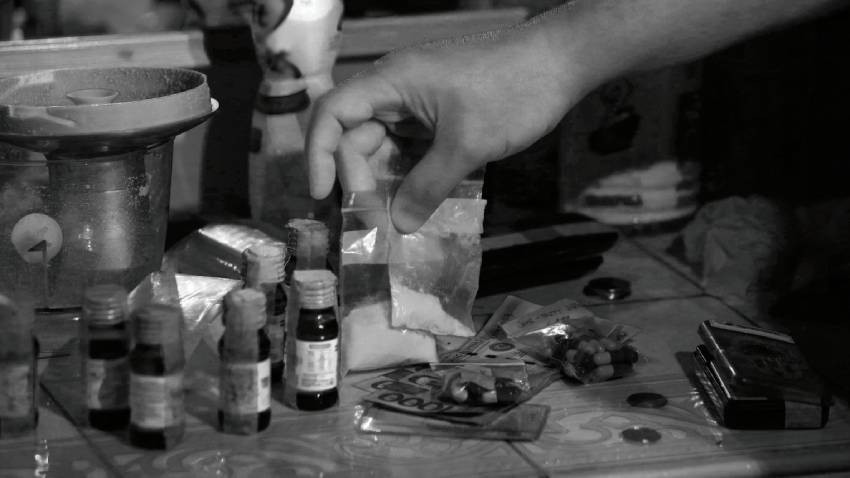Since 1988, Bulgaria has celebrated 26 June as The International Day against Drug Abuse and Illicit Trafficking, or World Drug Day. However, there was a period in its history when the state was actually encouraging the population to produce opiates.
The cultivation of sleeping poppies has been part of economic life since the Ottoman Empire. After Bulgaria’s liberation from Ottoman rule (1878), a new state policy was adopted, which over time grew more and more important for the livelihood of the population and for replenishing the treasury with foreign currency.
"After the reestablishment of the Bulgarian state the government’s policy was focused on agriculture. In 1883, the Ministry of Finance decided that the population should start producing opium. The state even rewarded growers who won awards for quality opium at agricultural exhibitions with a prize of 5 thousand leva," says Assist. Prof. Dimitar Giudurov, PhD at New Bulgarian University.

The economic crisis after the First World War forced part of the population to switch to a new agricultural crop, unconventional for our farming, but bringing good profits - Indian hemp and the extraction of hashish from it. Speculation flourished.
"Bulgarians have a proclivity for illicit trade," says Dr. Giudurov, explaining, "This population was part of the Ottoman Empire, a conqueror whose laws it did not feel the need to obey. People used to hide their produce to avoid taxes. After the Bulgarian state regained its independence, the population continued to sell illegally tobacco, opium, silk cocoons, rose oil, in order to avoid paying taxes and increase their profits."
At that time smugglers transported their contraband mainly by ship through the Black Sea ports of Burgas and Varna. Their profits were huge. They bought the drug at a price of 400 leva per kilo and sold it in Egypt for 35-40 thousand leva. In comparison, the monthly salary of the then Prime Minister was 6 thousand leva.
It is an interesting phenomenon that unlike some other European and North American countries at that time there was no organized crime and criminal world in Bulgaria. The reason for this was the weak urbanization - the population was concentrated mostly in the villages. Criminal groups in the country in the first decades of the twentieth century emerged as a result of abuse of office and influence:
"It was typical for the Bulgarian criminal groups that they would only gather for a brief period of time, commit a crime and disband. They do not participate as a group in other criminal activities. Criminals for certain types of offences organize public officials in high positions - police chiefs, district and county judges - who take the lion's share of the profits," Mr Giudurov said.

Despite the high quality of opiates produced in Bulgaria, drug addiction did not exist as a social and cultural phenomenon at the time. Such was the perception of the Bulgarians - that the drug was not intended for use, but for sale.
At the beginning of the 1930s Europe imposed strict measures against the production and distribution of drugs, and illegal groups moved their operational centres elsewhere - including Bulgaria. This country produced only 1% of the world's opium, but its legislation was favourable to smugglers - there were no prosecutions, fines were low and there were no extradition agreements.
"Bulgaria was accused of becoming a hub for drug distribution, but it was more of a meeting place for international smugglers who freely discussed drug channels. The problem was contained by the police, who used physical force," says Dimitar Giudurov.
The Bulgarian authorities' war against illegal drug production and distribution has been waged with varying success over the years and continues today.
English version: Elizabeth Radkova
Photos: personal archive, EPA/BGNES
Father Lyubomir Leontinow is one of three priests at the Cathedral of St Boris the Conqueror in Berlin and was the first priest ordained for the Western and Central European Diocese in 1994. After completing his theology studies in Bulgaria, he settled..
After Cheesefare (Forgiveness) Sunday, the Great Lent has begun on March 3. Orthodox Christians will abstain from eating animal food including meat, eggs, milk and dairy products. The Great Lent symbolizes the 40 days which Jesus spent in the..
Batak is a name every Bulgarian remembers with deference and pain because the fate of the small town in the Rhodopes is scarred by one of the bloodiest events in national memory – the Batak massacre. During the first days after the outbreak of..
On the second day after Easter begins Bright Week. It is so called because of the light that Christ's Resurrection brings to the world. According to..
Patriarch Danil of Bulgaria, Metropolitan of Sofia, greeted the faithful with the joyful words "Christ is risen!" In his Easter message, he called on..
Patriarch Daniil celebrated a divine service for the so-called Second Resurrection of Christ in the Sofia-based church of Saint Nedelya...

+359 2 9336 661
